by Lorri | Oct 24, 2012 | UnCorked
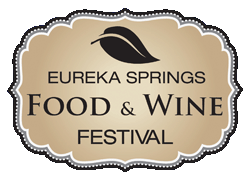 There’s no need to travel to Napa or Sonoma Valley in California for wine and food bliss because it can be found right here in our home state. Eureka Springs has long been a favorite destination for unique dining and shopping year-round. And the Eureka Springs Food and Wine Festival is one event wine lovers won’t want to miss. The colossal event featuring wine, food, art and community exploration runs Nov. 7-11.
There’s no need to travel to Napa or Sonoma Valley in California for wine and food bliss because it can be found right here in our home state. Eureka Springs has long been a favorite destination for unique dining and shopping year-round. And the Eureka Springs Food and Wine Festival is one event wine lovers won’t want to miss. The colossal event featuring wine, food, art and community exploration runs Nov. 7-11.
The event begins with Arkansas’ newest winemaking success, Margie Roeland’s Raimondo Winery “First Sip” release party Nov. 7. Raimondo Winery is a family-owned winery located on Norfork Lake that specializes in handcrafted Italian and Iberian wines. The winery’s output will also be featured at a dinner hosted by DeVito’s restaurant Nov. 11.
Growing up in Harrison with the original DeVito’s at Bear Creek Springs, I can confirm that this is an Italian dining experience not to be missed. Each course will be paired with a wine, and Raimondo’s extra-virgin olive oilsand infused balsamic vinegars will be used in the chef’s creations.
Many restaurants will be dedicating nightly food and wine pairing specialties throughout the week exclusive to the festival. Linda Hager, owner and chef at the Cottage Inn, will host a California Wine Dinner on Nov. 8-11 with each evening showcasing a different four-course meal paired with California wines.
But the festival isn’t just about wine in restaurants. Patrice Gros, co-founder of the Eureka Springs Farmers Market, will be giving a special tour of his U.S. Department of Agriculture-certified organic farm. The Foundation Farm grows more than 30 different vegetables and herbs year-round. Keels Creek Winery will be hosting a barrel/tank Tasting and Amateur Wine Competition on Nov. 10, and culinary instructor Karen Gros will conduct cooking classes focused on French cuisine and locally grown ingredients.
For a complete schedule of events, visit eurekaspringsfoodandwine.com or facebook.com/eurekaspringsfoodwinefestival.
by Lorri | Oct 17, 2012 | UnCorked
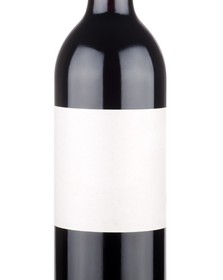 Wine labels can be trendy, appealing and, of course, confusing. Especially if French, Italian or Spanish is not your primary language. Wine labels offer helpful information, but sometimes the unfamiliar terms add to the confusion. To help decipher the code, here are explanations of some common foreign-language label terminology.
Wine labels can be trendy, appealing and, of course, confusing. Especially if French, Italian or Spanish is not your primary language. Wine labels offer helpful information, but sometimes the unfamiliar terms add to the confusion. To help decipher the code, here are explanations of some common foreign-language label terminology.
FRENCH
- Blanc de Blancs: Literally, white of whites. This means white wine made from white grapes. If it appears on a bottle of Champagne it means 100 percent chardonnay grapes were used.
- Blanc de Noirs: Literally, white of blacks. This means white wine made from red grapes. On a Champagne label it means the wine is made from pinot noir and pinot meunier grapes.
- Cote: A slope or hillside. Often it is followed by the name of the slope or hillside, for example, Cotes du Rhone (Hills of Rhone).
- Clos: A term used for a walled vineyard.
- Fut de Chene: The wine was matured in oak barrels.
- Vendange Tardive: Latepicked or late-harvested grapes. This appears on many sweet wine labels.
- Vieilles Vignes: The wine was made from grapes off old vines. On French wine labels it generally signifies a superior wine with concentrated flavors. Keep in mind, though, there is no regulated age for vines to be considered “old.”
ITALIAN
- Abboccato: This refers toa medium-sweet or semi-dry wine.
- Amabile: Meaning pleasant, this refers to a sweet wine.
- Recioto: A Venetian term for a strong sweet wine made from dried grapes.
- Castello: Literally castle, used like the French term chateau to identify an estate or other vineyard location.
SPANISH
- Crianza: Wine that has been aged for two years before release, one year of which has to be in a barrel. Or subjected to another specific aging process defined by the region’s governing body.
- Gran Reserva: A distinction for aged wines. For red wine it means that it has been aged for five years, of which a minimum of two has been spent in a barrel. White and rose wines for four years, with six months spent in wood.
- Abocado: A medium sweet wine.
by Lorri | Oct 10, 2012 | Tips, UnCorked
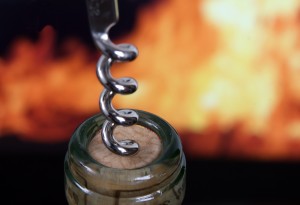 Up to this moment, even the wine list ordering anxiety was only amateur night compared to the angst of sending back your first bottle of wine. Your spouse is whispering to not draw attention, your guest may not know the difference in a chardonnay and pinot grigio and worse, there’s the impending stare from your waiter, the waiter who clearly thinks you’re trying to impress your dining partners.
Up to this moment, even the wine list ordering anxiety was only amateur night compared to the angst of sending back your first bottle of wine. Your spouse is whispering to not draw attention, your guest may not know the difference in a chardonnay and pinot grigio and worse, there’s the impending stare from your waiter, the waiter who clearly thinks you’re trying to impress your dining partners.
My mentor, wine writer Frank Prial said it brilliantly, “At best you will meet your trial with steadfastness and course … at worst you can console yourself that you’ve come a long way from the days when you were afraid to order the bottle in the first place.”
It’s not easy rallying the nerve to send a bottle of wine back or even questioning its condition but there are a few pointers and etiquette guidelines that can help ease the stress.
The ritual remains the same: The waiter opens the bottle, the person who ordered the wine will be asked if he would like to taste. Answer yes, and the waiter will pour a small amount. The diner will give it a quick sniff and take a sip, nodding yes if the wine is not tainted. Obviously, if the wine smells like a musty basement, dirty socks or vinegar you will tell your waiter, who will usually confirm the fault, retrieve a new bottle and begin again.
If you are dining in a restaurant with a knowledgeable staff this task will not be a debate or embarrassing conflict. Your waiter is opening the bottle for the first time at your table so consider from the beginning he is your ally. If you think the bottle has a fault, ask the waiter to taste the wine and offer his opinion. Knowledgeable staff will be able to evaluate and discuss the fault or aroma you are detecting.
Of course it doesn’t make sense to go through an entire dining experience with a bad bottle but there is a difference in a flaw and simply not enjoying the taste. Many times when ordering an unfamiliar varietal, vintage or region, the wine will express itself differently from traditional wines we drink on a regular basis.
This is important because many wines will have an unusual or unfamiliar aroma or taste very specific to the grape. For example, a beautiful old Burgundy pinot noir may have the aromas of barnyard, manure and a touch of mushrooms. It is important to understand this is not a fault but a unique character to the aging wine. Consider asking for a “tasting” pour, if the wine is available by the glass as well as bottle. This helps in the taste and fault confusion before ordering the bottle.
A last tip: the stemware could be the culprit. With industrial restaurant detergents and dishwashers, residue left on the glass can offset the aromas. Sometimes it may be as simple as asking to re-taste in a fresh wine glass.
by Lorri | Oct 3, 2012 | Tips, UnCorked
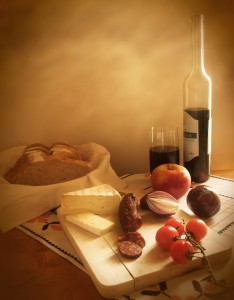 There really are a few ground rules in wine and food pairing, well not really “rules” but more like advice to keep in mind.
There really are a few ground rules in wine and food pairing, well not really “rules” but more like advice to keep in mind.
Follow the logic of the recipe. If a dish contains a certain red or white wine or even beer it generally makes sense to pair the same or a similar bottle with it. If your recipe is a sweet chocolate dessert with raspberries and cherries move in the same progression with a sweet red wine. If the pasta sauce calls for a few dashes of dry red or white wine the same will most likely match the dish.
Put out of your mind most of the rules you’ve heard. “Red wine with red meat” and “white wine with fish” worked for past dining rules but with today’s food fusions it does not always hold true. The only advice most experts agree on is to remember to drink dry wines before sweet wines, light-bodied wines before full-bodied and your wine must always be sweeter than your dessert.
Some foods and wines naturally flatter each other. These are classics for a reason – the match rarely fails. Apple or pear tarts and dessert wines, truffles or mushrooms and pinot noir, lobster and white Burgundy, roasted meats and most red wines, oysters and Champagne, Stilton cheese and port, goat cheese and sauvignon blanc and chilled dry fino sherry with roasted nuts.
Respect tradition – but not unquestioningly. Many countries, Italy and France to name a couple, have been pairingwines with certain dishes for centuries. There may be other pairings but why struggle to find new ones when they have already been perfected.
Chicken is much more than just chicken. Very rarely do we eat simple plain chicken dishes without a sauce or roasting, grilling or basting method. The starting point for chicken pairings can be found in the sauce or marinade. There’s quite a contrast between a delicate cream mushroom sauce and Thai green curry chicken, so consider the overall dish and not simply the chicken. (Same applies to most meat pairings.)
Don’t forget the sides. Generally most vegetables accompanying the meal won’t be powerful enough to dominate the main dish. But if your sides feature strong flavors such as onions, spicy salsas, cabbage or peppers you may need a more full-bodied wine to compete with the flavors.
by Lorri | Sep 26, 2012 | UnCorked
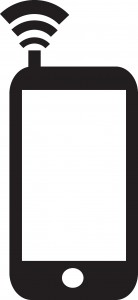 There has never been a more opportune time for wine enthusiasts. In this digital age, with the hundreds of applications for smart phones and tablets available, it’s as if we all can have a team of experts with us at the touch of our screen. Following are a few of my favorites.
There has never been a more opportune time for wine enthusiasts. In this digital age, with the hundreds of applications for smart phones and tablets available, it’s as if we all can have a team of experts with us at the touch of our screen. Following are a few of my favorites.
Looking for the perfect wine and food match? The Pair It! app ($4.99) is a fun and comprehensive food and wine pairing guide featuring more than 20,000 pairings. It offers practical guidelines and suggestions to match more than 180 varietals with 1,000 food items. You can either take advantage of expert suggestions by chef Bruce Riezenman, the brains behind its creation, or use the “swirl and shake” slot machine-style feature as your guide. The app includes a searchable database and allows users to save their favorite pairings.
For those looking for information on more than 1,000,000 bottles of wine Cor.kz’s “Cellar Tracker” feature is the app for you ($2.99). Wines can be searched by varietal or region, or the bar code scanner on the app. When you find a wine you like, it allows you to add and organize by regions, ratings, best rated, drink sooner rather than later and those you have consumed. The app also features a tab with wine choices you can build on from your comparison. Cor.kz is helpful for those starting out and exploring wine as well as experts seeking detailed information on rare and exotic bottles.
Snooth Wine Pro ($4.99) represents the next generation of app technology, using image recognition. Take a photo of a wine label and match it to a vintner in the wine database. Even if you don’t know what wine you are looking for it has a browsing feature that helps you not only find wines by price, taste preference and regions but a geographic search feature of wine stores near you. Another facet is a “virtual cellar” wine inventory management system that allows you to keep track of wines you have reviewed and bought.
The Wine Enthusiast Guide ($3.99) app is updated each month with expert reviews. With a few taps you can access up-to-date details, reviews, ratings and retail prices for more than 64,000 wines worldwide. It also offers a vintage chart, glossary and wine appreciation course giving you an extra edge in your wine knowledge.
The AG Wine Guide ($1.99) app is great for wine drinkers who don’t know the specifics about wines they are looking to drink but have a sense of what they enjoy. It is a rich resource for learning about appellations, varietals, food pairings and wine styles. It gives you choices related to your preferences. For example, when searching for red wines, “Bold and full bodied,” “smooth and medium-bodied” or “light and subtle” with detailed descriptions of each.
by Lorri | Sep 19, 2012 | UnCorked
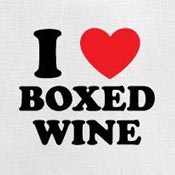 Despite the public’s negative reactions at the mere mention of boxed wine, one thing is undeniable: it’s a brilliant idea. Known in the industry as the bag-in-a-box, the packaging solves a common problem that troubled winemakers for centuries. Whether in an urn, cask or bottle, no matter how these are sealed, air attacks and degrades the wine, making an opened container’s life only a few days long.
Despite the public’s negative reactions at the mere mention of boxed wine, one thing is undeniable: it’s a brilliant idea. Known in the industry as the bag-in-a-box, the packaging solves a common problem that troubled winemakers for centuries. Whether in an urn, cask or bottle, no matter how these are sealed, air attacks and degrades the wine, making an opened container’s life only a few days long.
In 1965, Australian winemaker Thomas Angove was not seeking to change the image of wine but looking for a more practical and cost effective method for wine packaging. His invention evolved into today’s boxed wine. The box has a soft, flexible bag inside that is filled with wine and sealed without air. As the wine is drawn out the flexible bag collapses and protects the remaining wine from airspoilage. Placing the bag inside a box allows for space efficiency and ease of transportation.
You can’t deny it is a brilliant invention, yet image issues and the myth that boxed wine is inferior have prevented people from embracing it, much like our thoughts on screw-top wines just 10 years ago. In the early days, boxed wine concerns were founded, with an enormous amount of poor-quality wines being put into a box. But today more vintners areembracing the trend, and excellent quality boxed wines are resulting.
These are a few I have tasted and believe give the consumer a fresh new look at boxed wines.
- 2011 Lindeman’s Pinot Grigio, Australia (about $20 retail)
- 2011 Big House Red, California (about $22 retail)
- 2011 Silver Birch Sauvignon Blanc, New Zealand (about $20 retail)
- 2011 Black Box Cabernet Sauvignon, California (about $24 retail)
- 2011 Vina Borgia Garnacha, Spain (about $19 retail)
- 2011 Folonari Pinot Grigio, Italy (about $21 retail)
- 2011 Bota Box Chardonnay, California (about $20retail)
 There’s no need to travel to Napa or Sonoma Valley in California for wine and food bliss because it can be found right here in our home state. Eureka Springs has long been a favorite destination for unique dining and shopping year-round. And the Eureka Springs Food and Wine Festival is one event wine lovers won’t want to miss. The colossal event featuring wine, food, art and community exploration runs Nov. 7-11.
There’s no need to travel to Napa or Sonoma Valley in California for wine and food bliss because it can be found right here in our home state. Eureka Springs has long been a favorite destination for unique dining and shopping year-round. And the Eureka Springs Food and Wine Festival is one event wine lovers won’t want to miss. The colossal event featuring wine, food, art and community exploration runs Nov. 7-11. Wine labels can be trendy, appealing and, of course, confusing. Especially if French, Italian or Spanish is not your primary language. Wine labels offer helpful information, but sometimes the unfamiliar terms add to the confusion. To help decipher the code, here are explanations of some common foreign-language label terminology.
Wine labels can be trendy, appealing and, of course, confusing. Especially if French, Italian or Spanish is not your primary language. Wine labels offer helpful information, but sometimes the unfamiliar terms add to the confusion. To help decipher the code, here are explanations of some common foreign-language label terminology. Up to this moment, even the wine list ordering anxiety was only amateur night compared to the angst of sending back your first bottle of wine. Your spouse is whispering to not draw attention, your guest may not know the difference in a chardonnay and pinot grigio and worse, there’s the impending stare from your waiter, the waiter who clearly thinks you’re trying to impress your dining partners.
Up to this moment, even the wine list ordering anxiety was only amateur night compared to the angst of sending back your first bottle of wine. Your spouse is whispering to not draw attention, your guest may not know the difference in a chardonnay and pinot grigio and worse, there’s the impending stare from your waiter, the waiter who clearly thinks you’re trying to impress your dining partners. There really are a few ground rules in wine and food pairing, well not really “rules” but more like advice to keep in mind.
There really are a few ground rules in wine and food pairing, well not really “rules” but more like advice to keep in mind. There has never been a more opportune time for wine enthusiasts. In this digital age, with the hundreds of applications for smart phones and tablets available, it’s as if we all can have a team of experts with us at the touch of our screen. Following are a few of my favorites.
There has never been a more opportune time for wine enthusiasts. In this digital age, with the hundreds of applications for smart phones and tablets available, it’s as if we all can have a team of experts with us at the touch of our screen. Following are a few of my favorites. Despite the public’s negative reactions at the mere mention of boxed wine, one thing is undeniable: it’s a brilliant idea. Known in the industry as the bag-in-a-box, the packaging solves a common problem that troubled winemakers for centuries. Whether in an urn, cask or bottle, no matter how these are sealed, air attacks and degrades the wine, making an opened container’s life only a few days long.
Despite the public’s negative reactions at the mere mention of boxed wine, one thing is undeniable: it’s a brilliant idea. Known in the industry as the bag-in-a-box, the packaging solves a common problem that troubled winemakers for centuries. Whether in an urn, cask or bottle, no matter how these are sealed, air attacks and degrades the wine, making an opened container’s life only a few days long.